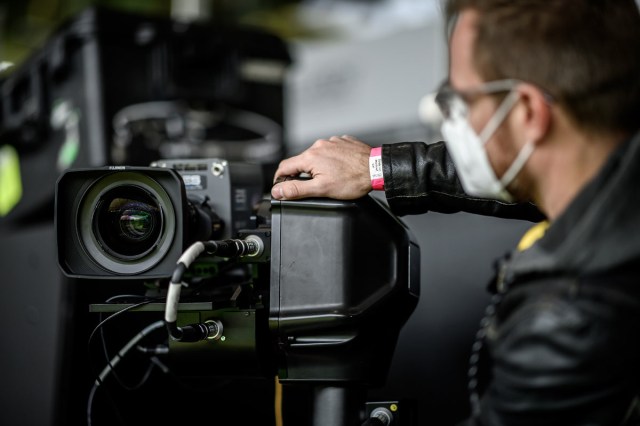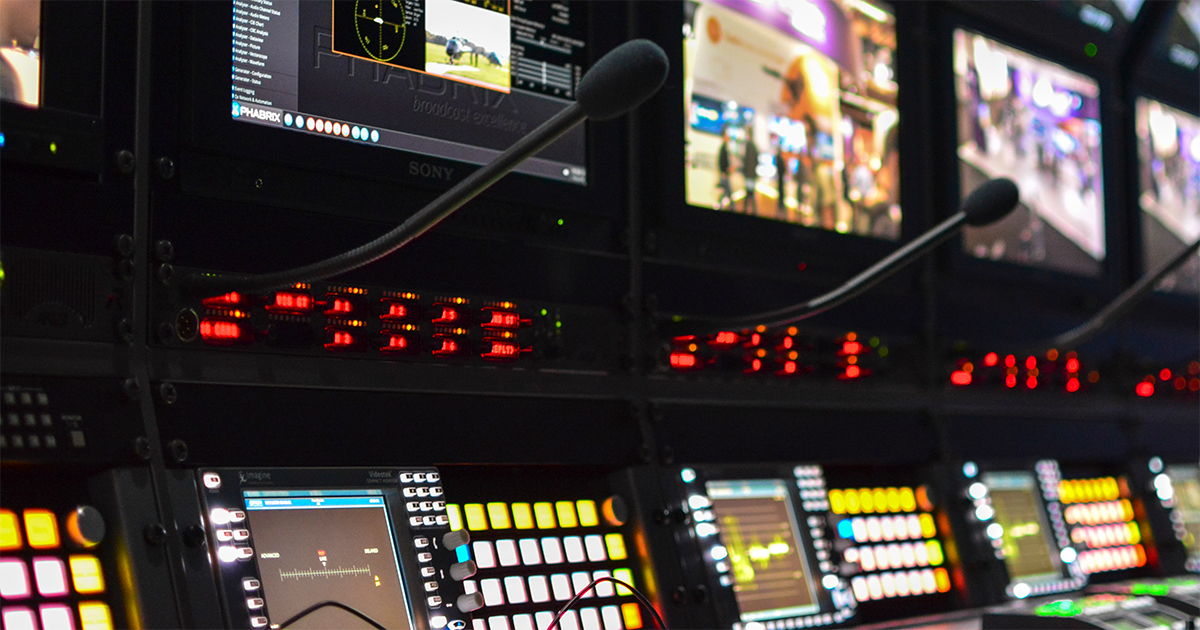The modern OB truck is a wonderfully efficient live production toolbox. In fact it’s really two toolboxes: a production center and also a technology hub.
For live production, the OB truck has evolved to the point where it can capacitate upwards of 30 production people working simultaneously and efficiently across camera feeds ingest, vision switching, show direction, audio mixing, comms, replays, graphics and camera shading/CCU.
As a technology hub — or nowadays perhaps more accurately a “data center” — the OB vehicle is a powerhouse, directing, routing, engineering and outputting sometimes hundreds of sources to and from the venue for the match, concert or other live event.
OB design companies, systems integrators, live production service providers and broadcasters have all collaborated to make the truck an ever-more efficient dual-nature hub, especially since the arrival of IP-based production and SMPTE-2110, which can enable even greater efficiency and power in routing and signal handling.
From Close Collaboration to Plexiglass Sneeze Separators
In early March 2020 the Covid-19 coronavirus exploded across the world and the now familiar pandemic era swept into existence. All live events came to a halt and all stadiums were shuttered, as crowds could not be allowed gather together in any venue due to the virulence of Covid-19.
And so we all headed to the dark side of the moon for two months, with no live events taking place around the globe. In sports, the first league back on the air after the coronavirus break was the Bundesliga on Saturday, May, 16, driven by the German Football League (DFL) and German Football Association (DFB). Two tiers resumed following the eight-week hiatus caused by the pandemic and social lockdown with all matches to be played behind closed doors.
“Now the question for the crew becomes, do you want to go back into the truck?”
The return-to-work set of protocols issued by the DFL at that time quickly became the blueprint for sports leagues and live events around the world. A “stadium bubble” of a maximum of 300 people was introduced, to include teams, coaches, stadium staff and TV production personnel.

For crew, a new regime of rigorous testing and temperature checks was introduced, along with sanitizing measures, a ban on public transport to grounds, the wearing of face masks, social distancing for camera positions, constant hand disinfecting, minimum time on-site — and, of course, the removal of on-site catering.
For trucks, the layout was changed to reduce the number of workstations to comply with rules and distancing and the use of Plexiglas “sneeze screens” where social distancing was not possible. Greatly increased ventilation was introduced with doors opening for ten minutes several times a day, and equipment surfaces and door handles were now cleaned by the service provider before and after the production period, under the supervision of the Covid Safety Officer.
The Rise of Regional Operations Centers (ROCs)
Around the world, the live production community watched on as the Bundesliga came back to life with matches in empty stadiums and augmented audio introduced to recreate a little live match atmosphere. The pandemic also forced OB providers to analyze and pull apart the nature and power of the OB truck — something, of course, nobody ever thought they would be asked to do.
(Even if, in a separate argument, the issue of large trucks driving around the countryside and our cities every week to produce live events does need to be questioned in light of the sustainability model and the continuing impact on the environment).
In terms of production crew, where possible and appropriate some teams such as replay or graphics were moved out of the OB truck into separate cabins on-site. In most cases, however, the concept of remote, decentralized, distributed production rapidly came into being with crew members provided with the equipment and return paths required for them to continue working on live productions while remaining at home.
“This distributed, working from home model has changed the nature of pretty much every OB-based production around the world in the last months — a model that works, is still evolving, and contains many questions that have still to be addressed when vaccination is widespread and the pandemic is wrestled back under control.”
This distributed, working from home model has changed the nature of pretty much every OB-based production around the world in the last months — a model that works, is still evolving, and contains many questions that have still to be addressed when vaccination is widespread and the pandemic is wrestled back under control.
In technology terms there has been an equally rapid evolution, with IP and a mix of public and private internet along with some engineering ingenuity enabling crew members to (a) work from home, (b) work in adapted HQ buildings or (c) work from new ROCs (regional operations centers) that have been spun up by service providers to enable some crew members to drive to easily accessible venues with production kit in situ in a socially distanced and controlled manner.
Vaccination Programs for Live Production Teams
Live production has adapted and evolved during the pandemic crisis to continue covering elections, sports events, religious services, and all kinds of other events without crowds, and while maintaining social distancing. The OB truck has continued to be at the heart of the action, and, where budgets allow, extra trucks are added to the production to provide the mandated social distancing while maintaining the quality of the show or shows.
We hope and pray that this enforced new status quo will change back again, once the various vaccines start really rolling out across the world. There is going to come a point in the next months where all production managers are going to ask, “So, do we go back to the compound and back into the OB truck?”
Many governments around the world have made exceptions allowing film and TV production to continue, as everyone recognizes that both scripted and non-scripted electronic media entertainment is more important than ever before for the well being of populations.
If we follow that argument, should film and TV production crews be prioritized for vaccination? Just as it has been required to take tests and temperature checks all the way through 2020, what if prioritized vaccination programs were introduced so that live production teams could get back on-site knowing they were virus-free and virus-protected?
“Should film and TV production crews be prioritized for vaccination? Just as it has been required to take tests and temperature checks all the way through 2020, what if prioritized vaccination programs were introduced so that live production teams could get back on-site knowing they were virus-free and virus-protected?”
Now the question for the crew becomes, do you want to go back into the truck? Or perhaps from the production company’s perspective it becomes, “There is no longer any reason for you not to return to the truck — so get back into the compound. As you were!”
Does that argument stack up — again leaving aside environmental sustainability, which is really a much larger and more long-term issue?
What do you think? New, powerhouse OB trucks are still being designed and built around the world, fantastic models of quality and efficiency as they harness the latest technologies to enable higher quality productions.
Many people want to get back to doing their job in those familiar surroundings, with the unique camaraderie and satisfaction emanating from the capture of that live event as a close-knit team.
However, some broadcasters have already said they’re never going back to the old ways: the new distributed remote production model works and it’s here to stay. How will this dichotomy be resolved as we move into 2021 and away from the coronavirus pandemic crisis of 2020?
This is a new discussion, a new debate — one that can only really begin in earnest when we move past the current virus surge period to calmer waters as the pandemic recedes in coming months. Time will tell.


